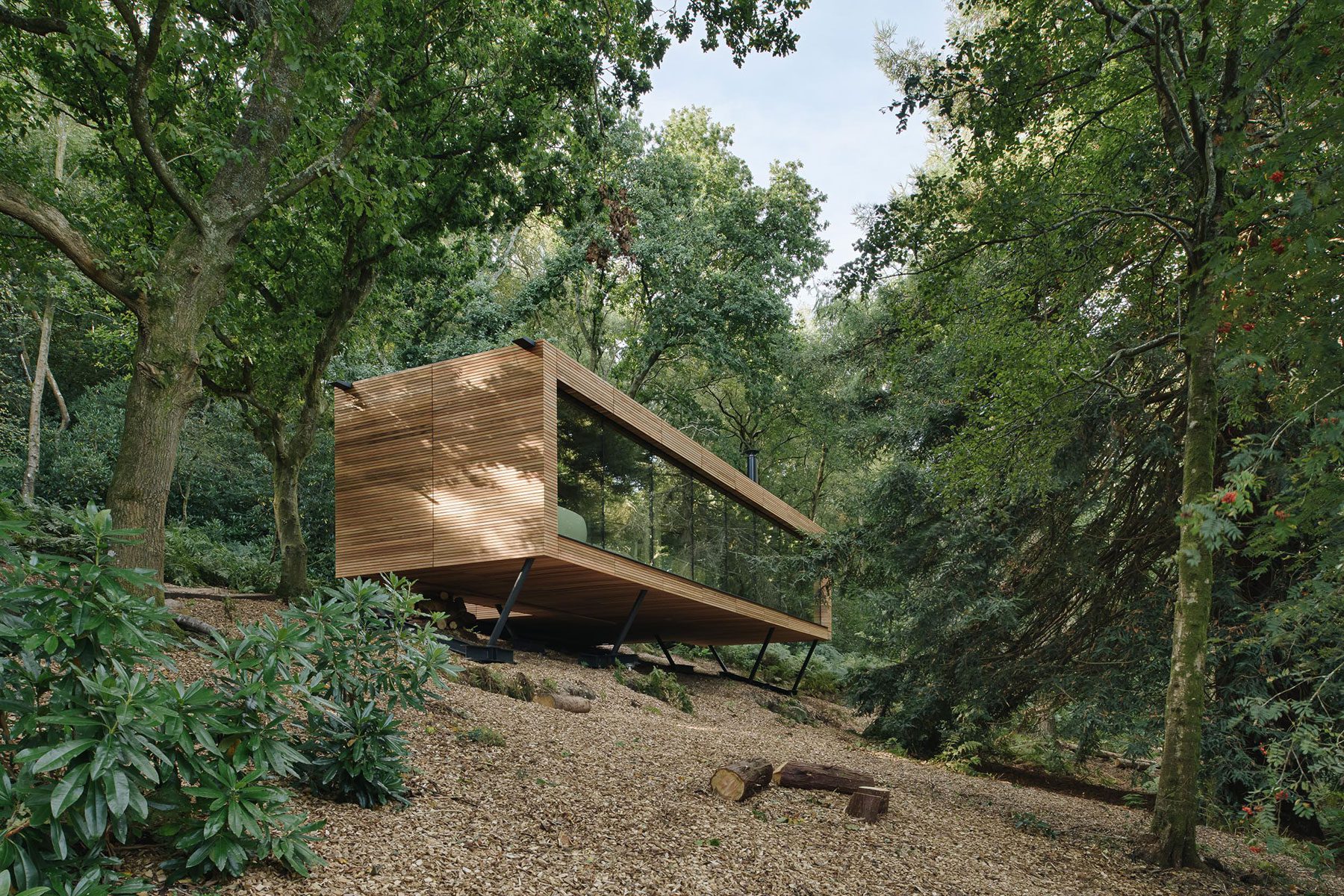In the High Weald Area of Outstanding Natural Beauty, a timber abode offers a rural retreat for those looking to immerse in the wilderness.
Hidden away in the wooded enclaves of High Weald in East Sussex, a timber lodge has landed. Designed by Warwickshire-based practice, Michael Kendrick Architects, ‘Looking Glass Lodge’ is for clients Rik and Lindsey Goodman, who use the property for their business with it serving as a retreat for those looking to escape into nature.
The hybrid steel/timber-framed structure delicately perches on the protected woodland of the High Weald AONB, resting on stilts and screwpile foundations to minimise its impact on the land below. It is made from mostly natural materials, built by craftspeople from nearby Hastings and is clad externally and internally in western red cedar timber. The outside has been intentionally left unfinished meaning it will naturally turn silver-grey, with this tone eventually contrasting the warmer hues found inside.
When staying at the lodge, guests will enter via a narrow, wooded path that leads onto a terrace to the south of the property. The front and rear facades are defined by large picture windows that open the place up to views out to the forest on either side, amplifying the sense of immersion into the wilderness setting. Self-tinting electrochromic glass prevents overheating and provides privacy, while also ensuring that the property doesn’t disturb bats in the area (three bird boxes and one bat box have also been installed).
“Biophilic principles were of utmost importance to us when designing the lodge,” say the Goodmans on the retreat’s website. “Through this, our intention has been to create a closer connection to nature through the way the lodge has been built, using natural resources to create a sense of harmony between the architecture and the natural world.”
Inside is an open-plan living quarters within which a kitchen a dining area sits in the middle, with an L-shaped sofa, armchair and floating, log burning stove to west of it. Birch-plywood timber has been used for joinery that has been arranged to subtly subdivide the space to a create a more private bedroom nook and en-suite on the eastern side.
“The site’s existing ecology, habitat and treeline were a key consideration throughout the project, from manufacture to completion, to preserve the character of and minimise the impact on the protected AONB landscape,” said the architects in a statement. “A prime example of this is the design of a hybrid steel/timber-framed structure, which bears down on screwpile foundations in a low-impact approach that avoids damage to existing tree roots and ensures no trees needed to be felled. Furthermore, by prioritising off-site construction, the project was able to overcome logistical limitations on crane use and vehicular access, to deliver both a high-quality design and a minimally disruptive construction process.”
More images
Source: Architecture Today




